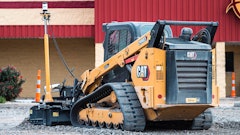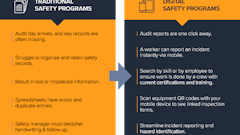
When I see current articles that mention the COVID-19 pandemic now, it almost seems quaint or odd. I am generally struck with a brief moment of realization that, in my head, sounds something like, "oh yeah, that was terrible, and crazy."
However, it's still really valuable as a marker, as it represents, perhaps, the largest inflection point for labor for such a short amount of time. And while I have read more articles and opinions about how to solve it, adapt to it, or even ignore it, the reality is that no broad answers have come even fire years later.
I have seen small pockets of good news, of contractors moving in the right direction, finding solutions that fit their situation. I've seen some companies trying things they've never done before, like getting involved in local job fairs, sponsoring trade school, and I've even seen some larger businesses building their own education-to-workforce pipelines.
So far, all these solutions have been isolated events. When I travel and talk to people, I still get the feeling that a lot of companies are just "making due" and holding out hope that more workers will show up.
My gut-feeling is that, if they don't change soon, then they will be waiting a really long time. So, it's important to understand what the problem actually is, as well as what it isn't.
I've talked about this before, at length, but suffice to say that when I hear people say, "People just don't want to work anymore," what it really tells me is that they don't know what's going on. Here's the facts: The construction industry's workforce fully rebounded to pre-pandemic levels by February 2022, a full two months ahead of the overall private sector figures.
As of the end of 2024, construction sector employment is actual 9% greater than it was before the pandemic. That outpaces the country's overall employment growth by 4%. Not only did people go back to work, more people are working in the construction field than before COVID.
According to the National Asphalt Pavement Association (NAPA), the core asphalt workforce is about 150,000 strong, part of a broader highway construction and maintenance labor pool of roughly 350,000 people. Additionally, our industry is hiring workers at a faster rate than others.
The American Road & Transportation Builders Association (ARTBA) reported that transportation construction firms expanded their workforce each quarter in 2023, and by Q1 2024 the number of employees on road project sites was 11% higher than a year prior. Also, eight out of every ten workers hired into our industry are specifically "craft" employees, not office workers. This indicates a strong demand for field labor. The Association of Builders and Contractors
The Association of Builders and Contractors
Despite all of this positive news, the Association of Builders and Contractors (ABC) published a report saying that ~439,000 new workers in 2025, and ~499,000 in 2026, to keep up with demand. What is causing this huge gap if it isn't due to people not wanting to work, as a lot of popular media would suggest?
Something not talked about enough in these conversations about labor shortages, is that they didn't just appear overnight. Roughly 80% of heavy civil contracting firms report difficulty in hiring these craft workers, and that statistic is virtually THE SAME as it was BEFORE the pandemic.
COVID only served to highlight a multi-generational failure to invest in our country's trades education while we over-emphasized college based academic careers. Then these factors were compounded on top of many decades worth of legislation and politics aimed at eroding union power and membership.
So, when the massive spending power behind the IIJA and the IRA hit the market, infrastructure spending in all fifty states dramatically increased. Thus the demand for heavy civil engineering firms jumped, and the need for skilled workers naturally increased along with it. When combined with the pre-pandemic workforce landscape, it was a perfect storm. On top of that, rather than trying to persuade workers from other countries to move to the United States and join our workforce, we seem to be insistent on doing the opposite.
What you can take away from this are these two things. The first is that it might not be that you are doing something "wrong" per se, when trying to fill your labor needs. Competition for quality labor is incredibly fierce right now, and skilled laborers have the ability to shop themselves around for the highest wages they can get. However, even if you aren't doing something wrong, you might need to actively find new approaches. Some of the old ways don't work as well as they used to.
Secondly, amidst all the doom and gloom surrounding artificial intelligence (AI) doing away with people's jobs, contractors and construction firms should be actively reframing how they market themselves to potential employees. For the foreseeable future, ChatGPT won't be walking up to a construction site to jump on a finish roller or operating an asphalt milling machine down the freeway at night. These are more secure jobs in terms of AI replacement, than many of the college-certified jobs and office gigs.
See you on the road!




















